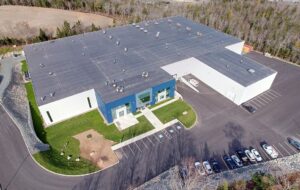Editor’s Note: Wade Barnes is CEO of Farmers Edge, the precision agriculture and ag data management platform. He is regularly invited to speak on the impact of advanced technologies, emerging carbon markets and the role these play in our evolving agricultural supply chains. Here he writes about the role precision ag technologies can play in offsetting carbon emissions and participating in the carbon market in Canada.

(Farmers Edge recently raised funding from a high profile Canadian billionaire, creating an exit for a prominent VC investor. Find out more here.)
Last month, the United Nations’ 22nd Conference of Parties (COP 22) came to a close in Marrakech, attracting more than 70 heads of state and government meeting to determine the next steps forward in implementing the historic global climate action decisions made last year in Paris.
Half a world away, Canada announced it would enact a nationwide carbon tax floor price for the provinces for 2018. If it moves forward, Canada’s carbon tax will put a price on each metric ton (tonne) of greenhouse gas (GHG) emissions emitted, strongly discouraging businesses and organizations across the country from enacting carbon-heavy practices.
For agriculture, there are existing carbon programs that could help growers derive value from their business operations. In Alberta, for instance, growers are already curbing emissions to earn these types of benefits. Facilitated in large part by precision ag systems and tech-enhanced farming techniques, these growers are recording and managing the data necessary to participate in Alberta’s Carbon Offset System, a first-of-its-kind legislative initiative in North America (started in 2007), that gives agricultural producers new ways of benefiting from reducing GHG emissions. The Offset System, which includes a number of protocols, including the Conservation Cropping Protocol (CCP) and Nitrous Oxide Emission Reduction Protocol (NERP), provides guidelines for growers to follow in order to earn carbon offsets from documented improvements to practice changes – from no-till farming to managing nitrogen inputs more efficiently. By verifying these measures with field-centric data, growers and data aggregators can sell directly into Alberta’s offset market, allowing them to generate a monetary benefit from these sustainability-focused programs. In effect, growers can pay for data management technologies to derive better and more accurate data that, consequently, allows them to make more informed decisions to drive higher profitability on their farms.
Equipped with highly accurate, field-centric data, growers can track fertilizer applications, as well as calculate and verify carbon offsets that can be traded in the carbon markets. In one example, using data enabled by this technology, 43 growers operating on 555 fields across nearly 130,000 acres, mitigated 9,725 tonnes of CO2e that were eligible for offset credits in the CPP. These offsets were sold into the existing Alberta regulated marketplace, which has a 2016 maximum carbon price of $20 per tonne, rising to $30 in 2017. With the initial federal floor price for provincial taxes set at $10 (CAD) per metric tonne of emissions in 2018, and set to rise in annual increments to $50-per-tonne by 2022, there is an enormous opportunity to generate economic returns by mitigating farm emissions. As more regions enter the competitive market, the potential for growers to achieve these returns expands dramatically.
While Canada’s Carbon Tax is one of the largest, national systems in the world, this tax system will have an impact far beyond the country’s borders. As more countries look for cost-effective ways to curb emissions and support business growth without encroaching on energy access, the opportunities for growers in Canada’s market-based approach to carbon mitigation provides a model for how agriculture could benefit within these parameters. This is particularly true in regions with large agriculture sectors, where big data enables the agricultural community to participate in carbon markets and to move towards a more sustainable way of farming.
Increasingly, it’s not just governments that are turning to agriculture as a way to improve sustainability practices while also improving bottom lines; it’s also corporations. In one notable example, Dow Chemical turned to agriculture during the 2016 Summer Olympics in Rio, choosing to partner with Farmers Edge to improve sustainability while also deriving additional credits.
Looking forward, if the global economy trends towards instituting more carbon pricing parameters, governments and growers alike can look at Canada’s existing programs as an example of how carbon pricing, large-scale farming, and big data can all work towards the same goals: a sustainable and profitable ag industry.




